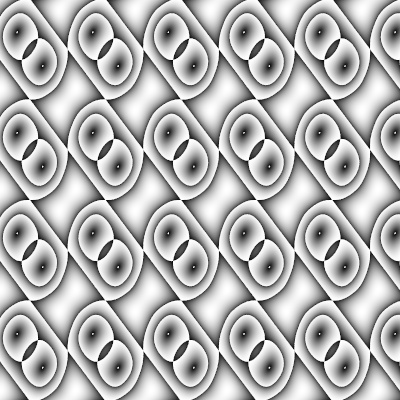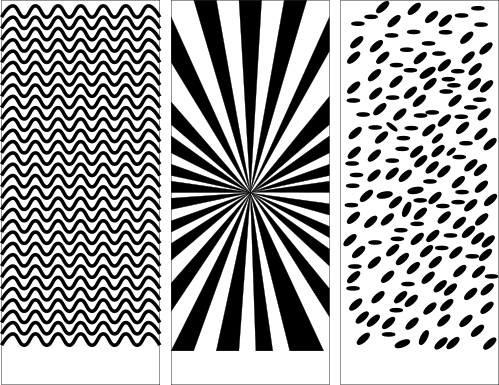In the previous thread about this subject, I posted a few things, which I’m reposting here almost verbatim, save for two ideas: one was implemented by stoermelder, and the other by myself (it should hit the library soon if all goes well).
All the simpler ideas are things I might implement myself. I am not experienced with C++ or DSP so I won’t touch some of the more complex ideas.
If you choose to adopt an idea here, I’d appreciate a ping so I de-prioritize working on it.
Quick reference expander
Blank panel that provides quick references about things you’d look up often in VCV, such as which Braids abbreviation means what, so you can look up stuff while you jam without ruining your flow.
Place it next to a supported module to get the relevant page via the expander systerm, or use right click to select the page.
It should be done by an author who’s open to receive new SVG faceplate pull requests so it can all be bundled in a single convenient place.
Pitchbend Helper
Figures out the math to do a standard pitch bend, with advanced features: scale-aware, quantized glissando. For example, dial in the scale and make it so that pushing the bend to the max makes you end up 3 scale degrees above the starting position. Or make the pitch bend 24 semitones, quantized to F# Minor notes. [Note: I am currently working on this one. If you adopt the idea, please ping me.]
Sound Test
A visualizer that looks like old videogames’ sound test modes, with many piani on top of each other. Getting the aesthetics right is crucial here. It needs the many keys closely stacked on top of each other. Good visual references: Knuckles’ Chaotix, FMDSP, Hoot Player, Vanbasco’s Karaoke Player, TMIDI Player.
Text Chat to CV
The module offers a few triggers and continuous -10/+10v CV outputs. When connected to an internet chatroom, such as Twitch chat, viewers can send commands such as !trig1 or !signal2 6.4. While it might be better implemented outside of VCV (as a separate program sending data over a virtual MIDI device), it’d be fun for viewers to see their input given a physical presence in the streamer’s patch, and hear the performance react to their choices.
Mario Paint
A sound module taking V/OCT and gates for each of the 15 original instruments (meticulously sampled from real hardware or Higan). That’s it.
Sampling those sounds is a gray area. Ethically, they are single notes meant to be used in music composition in software meant to foster creativity, so I will argue it’s no different from sampling a classic synth. Pragmatically, Nintendo has never sent their lawyers after Mario Paint Composer, a PC program that takes graphics and sounds directly from the SNES software. Using the “Mario” trademark is what they’d be the most likely to object to. A fun module name suggestion I received when mentioning it was “Bowsette Paint” (a fan-made character, so Nintendo can’t object on trademark grounds).
Web Radio
Grab a live webradio stream to infringe copyrights in real time. I think antN already can do that, and modular80’s Radio Music lets you load files, but I’d like instead to have built-in URLs curated for quick operation. Just dial in CLASSIC ROCK, ANIME, POLITICS, DEATH METAL, DAD RAP, ITALIANO, DOO WOP, etc., and let the DJ spin the good jams for you.
Rubato Orchestra Conductor
Interpolate beats to turn them into a clock.
Send a trig to signify a beat, have the module interpolate and serve as a clock. This is not a “set and forget” BPM detector nor a system for sudden changes in tempo (tapping on the beat has too low a level of granularity), this is to humanize the energy of a sequenced song.
You could also use the velocity at which you tap with a slew limiter to alter the intensity of the performance, but this probably shouldn’t be that module’s concern.
Progression-aware magic chord dispenser
Grids, but for chords. Set the key, move knobs, send a trig, and the black box picks evolving chord progressions that sound good on a polyphonic V/OCT jack. You can then patch it to a poly oscillator, but the real fun happens if you also split the channels and generate melodies from chord notes.
Progressions should not be crafted at random, but chosen and repeated in ways that would please intellectual theory nerds. But I don’t know aout those ways, I’m a theory illiterate idiot who barely understands what a “scale” even is.
EDIT: This is pretty much what Meander does!
Sticker Box
How about messing up your super expensive modular rig by slapping a bunch of stickers all over it? Think how Reason places a bit of console tape on every rack device for you to name them, for example.
I have zero clue how feasible it is, but since I saw examples of modules drawing outside their boundaries, maybe it can work, I have not looked up the API details yet.
The module could be modal, switching the current sticker being edited, comprised of an input box to edit the text, navigation buttons (Previous, New, Edit, Delete, Next), and knobs to change the X/Y offset, rotation, scale, opacity, and template.
EDIT: Implemented as Glue
Auto-Tune
I imagine the basic algorithm behind autotune and melodyne is well documented by now, and it might be easy to re-implement the basic concept, especially if you’re not after studio quality natural-sounding correction but after the very artificial “autotune effect”, making the attack very fast to obtain a vocoder-like choppy glissando.
Turntable
Fun skeuomorphic multi-module turntable sampler system, meant for scratching. The main module is a turntable with a spinning record that you can grab and scratch. It could sound realistic, and also enable creative uses that are impractical on real turntables.
Similar to things you can already do with Nysthi’s Jira Jira echo & Complex Simpler but with live sampling & time travel.
Here’s a very very very naïve first draft how it could work:
- You can load a sample or record a rolling buffer from the audio in.
- You can use a rolling buffer of arbitrary length. There is a small crossfade at the point the buffer rolls back to the start. If you’re sending it sounds perfectly synced to the beat, then scratching bidirectionally will probably sound natural.
- You can also activate a delay: by sending sound to the rolling buffer one or two bars before you want it played, you can time travel, scratching both directions, and cue back to the present.
- You can use a mouse or midi controller to grab and scratch.
- The turntable could be represented as follows:
- Torque: Sawtooth LFO with acceleration & deceleration.
- Hand pressure: How much force is applied by the scratching hand vs. torque.
- Hand direction: If any pressure is applied, it interprets movement in CV as relative motion applied to the disk.
- Cue: Send it a value + a trig to send the needle to that position. The value is absolute relative to the length of the buffer.
Most features could be split off to smaller modules. A possible system:
- Single turntable, placed vertically, the record taking most of the space on the module.
- Motor (dual sawtooth LFO powering two turntables, with acceleration/deceleration when powered on/off, taking hand pressure input)
- Crossfader
- Cue point memory
- Hand movement memory, with pre-loaded bank of common turntable motions
- An interally hardwired module containing the full system ready to go, both in single turntable and dual turntable configuration
TBH, I don’t think this idea has much of an audience, with the modular synths and hip-hop worlds having so little overlap, so it would have no success as a paid module, and is a crazy amount of effort to do for free unless it’s a true labor of love.
[NOTE: I intend to work on one piece of the puzzle eventually: rotational motion to CV. It won’t be a full system but will be usable as a turntable to send a ramp to something like PdArray]]
Voice cloning as a module
That one seems really hard to implement, I haven’t looked into details.
MIDI recorder with Drag & Drop file out
Because of my interest for semi-aleatoric composition, I’d like to use my modular environment as a pure composition tool: if I get it to generate a composition I like, I want to be able to record it to MIDI, rather than to audio.
It’d be great if it were possible to drag and drop a MIDI clip from the module directly into a DAW, without an intermediary cable or loopback device, in the same way that some drum VSTs allow you to craft drum parts and drop the clips directly in the host’s timeline. I have no idea about the feasibility of it, probably depends whether the VCV API exposes enough to plug in a library abstracting out file drag and drop for each OS.



